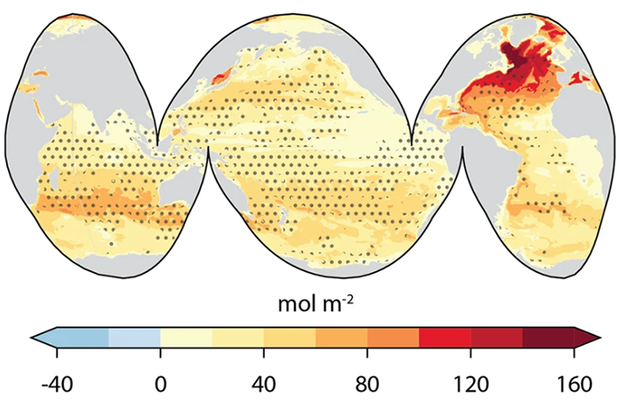Regional sensitivity patterns of Arctic acidification revealed with machine learning

<p>A figure from the machine-learning ocean acidification paper. Credit: DOI:0.1038/s43247-022-00419-4</p>

A figure from the machine-learning ocean acidification paper. Credit: DOI:0.1038/s43247-022-00419-4
Ocean acidification (OA) is a consequence of the absorption of anthropogenic carbon emissions and it profoundly impacts marine life. Arctic regions are particularly vulnerable to rapid pH changes due to low ocean buffering capacities and high stratification. This research applied unsupervised machine learning methodology to simulations of surface Arctic acidification using two state-of-the-art coupled climate models. The authors identified four sub-regions whose boundaries are influenced by present-day and projected sea ice patterns. The regional boundaries are consistent between the models and across lower and higher carbon emissions scenarios.
Stronger trends toward corrosive surface waters in the central Arctic Ocean are driven by early summer warming in regions of annual ice cover and late summer freshening in regions of perennial ice cover. Sea surface salinity and total alkalinity reductions dominate the Arctic pH changes, highlighting the importance of objective sub-regional identification and subsequent analysis of surface water mass properties.
Read more at the link below.